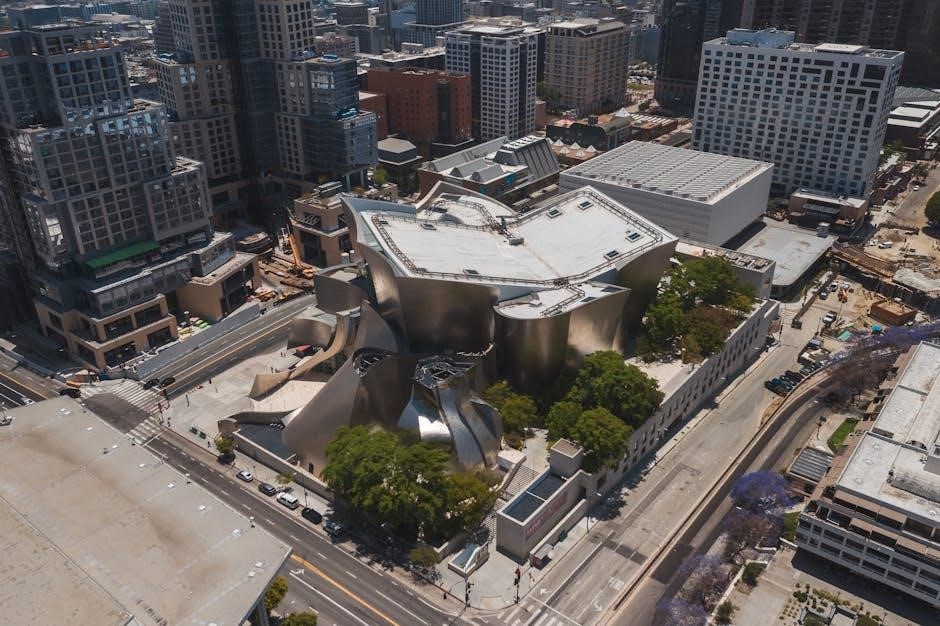Adolescence is a critical period for sexual identity exploration, including bisexuality, which often emerges during these formative years. Many bisexual teens face unique challenges, such as discrimination and marginalization, emphasizing the importance of understanding and supporting their experiences during this pivotal phase of development.
1.1. Definition and Understanding of Bisexuality
Bisexuality refers to the emotional, romantic, or sexual attraction to individuals of more than one gender. It exists on a spectrum, with varying degrees of intensity and expression. Unlike pansexuality, bisexuality often implies attraction to two or more specific genders, though definitions can vary. Bisexuality is not a phase but a legitimate sexual orientation. Adolescents may experience fluidity in their attractions, which is natural. Understanding bisexuality requires recognizing its validity and rejecting misconceptions like the “confusion” narrative. Recognizing and respecting bisexual identities is crucial for fostering acceptance and self-identity during adolescence.
1.2. Prevalence of Bisexuality Among Adolescents
Research indicates that a significant portion of adolescents identify as bisexual or experience bisexual attractions. Studies suggest that approximately 15-25% of teenagers report being attracted to more than one gender. This rate is higher than among adults, reflecting the exploratory nature of adolescence. Factors such as societal openness and increased awareness contribute to higher self-identification rates. However, many adolescents may not openly identify as bisexual due to stigma or uncertainty. Understanding these prevalence rates is essential for addressing the unique needs of bisexual teens in educational and support systems.

1.3. Importance of Addressing Bisexuality in Teenage Years
Addressing bisexuality during adolescence is crucial for fostering healthy development and self-acceptance. Teens exploring their sexuality often face confusion and uncertainty, making early support essential. Ignoring or dismissing bisexual identities can lead to mental health challenges, such as anxiety or depression. Open discussions and validation help teens navigate their feelings and build resilience. Schools, families, and communities play a vital role in creating inclusive environments. By addressing bisexuality early, society can promote emotional well-being, reduce stigma, and empower adolescents to embrace their identities confidently. Early intervention and acceptance lays the groundwork for a healthier and more supportive transition into adulthood.

The Process of Sexual Identity Formation
Sexual identity formation is a complex process involving self-discovery, exploration of attractions, and understanding of emotional and physical connections. It shapes adolescents’ understanding of their identity.
2.1. Psychological and Biological Changes During Adolescence
Adolescence is marked by significant psychological and biological changes that influence sexual identity formation. Hormonal surges, particularly estrogen and testosterone, trigger physical and emotional shifts. The brain, especially the prefrontal cortex, matures, enhancing decision-making and self-perception. These changes often prompt adolescents to explore their attractions and question their identity. The interplay between biological development and psychological exploration creates a dynamic process where teens begin to understand their sexual orientation, including feelings of bisexuality. This period is crucial for self-discovery and laying the foundation for identity formation.
2.2. The Role of Peer Influence and Social Environment
Peer influence and the social environment significantly shape the sexual identity exploration of bisexual adolescents. Adolescents often look to their peers for acceptance and validation, which can either support or challenge their emerging identity. A supportive social environment fosters confidence and self-acceptance, while a rejecting one may lead to confusion or internalized biases. Societal norms and expectations, as reflected by peers, play a crucial role in how adolescents navigate their bisexuality. Positive interactions can encourage openness, while negative ones may lead to concealment, highlighting the profound impact of social dynamics on identity formation.
2.3. The Impact of Culture and Society on Sexual Identity
Culture and society play a pivotal role in shaping sexual identity, particularly for bisexual adolescents. Societal norms, values, and expectations often dictate how individuals perceive and express their sexuality. In heteronormative cultures, bisexual teens may face challenges in asserting their identity due to lack of acceptance or understanding. Conversely, inclusive and progressive societies foster an environment where sexual diversity is celebrated, enabling adolescents to explore their identities more freely. Cultural attitudes toward same-sex relationships and gender fluidity also influence self-perception and the degree of openness one feels comfortable with. Visibility of bisexual role models in media and community further impacts self-acceptance and resilience against stigma.

Challenges and Difficulties Faced by Bisexual Adolescents
Bisexual adolescents often face discrimination, rejection, mental health struggles, and internalized bi-negativity, which can lead to social isolation and emotional distress during their formative years.
3.1. Internalized Bi-Negativity and Self-Acceptance
Internalized bi-negativity refers to the self-doubt and shame bisexual adolescents may feel due to societal stereotypes and misconceptions about bisexuality. This can stem from a lack of representation, invalidation of their feelings, and exposure to biphobic rhetoric. Such internalization often leads to struggles with self-acceptance, as teens may question the validity of their sexual identity. This emotional conflict can manifest as low self-esteem, anxiety, or confusion about their place within the LGBTQ+ community. Overcoming these challenges requires supportive environments, positive role models, and education to help adolescents embrace their identity with confidence and resilience.
3.2. Family and Social Rejection
Bisexual adolescents often face rejection from family and friends, which can exacerbate feelings of isolation and self-doubt. Many experience invalidation, with loved ones dismissing their identity as a “phase” or “confusion.” Social rejection can also come from peers, leading to exclusion and marginalization. This rejection is compounded by the stigma of being part of a community that is often misunderstood, even within the LGBTQ+ spectrum. The emotional toll of rejection can lead to increased stress, low self-esteem, and a higher risk of mental health challenges. Social isolation further complicates the journey toward self-acceptance and identity formation.
3.3. Discrimination and Bullying in Educational Settings
Bisexual adolescents often face discrimination and bullying in schools, contributing to a hostile learning environment. Peers and even educators may exhibit bias, leading to verbal harassment, social exclusion, or physical abuse. Schools frequently lack policies to address bisexual-specific issues, exacerbating feelings of invisibility and marginalization. This mistreatment can result in poor academic performance, increased absenteeism, and higher dropout rates. The emotional impact includes heightened anxiety, depression, and low self-esteem. Such experiences underscore the urgent need for inclusive policies, training, and support systems to ensure bisexual students’ safety and well-being in educational settings.

Mental Health and Well-Being
Bisexuality in adolescence is linked to higher rates of anxiety and depression due to stigma and discrimination. Internalized bi-negativity and lack of acceptance worsen these issues. Access to supportive environments and mental health resources is crucial for fostering resilience and well-being in bisexual teens.
4.1. The Impact of Stigma on Mental Health
Stigma surrounding bisexuality significantly affects the mental health of adolescents, leading to increased anxiety, depression, and low self-esteem. Societal rejection and internalized bi-negativity often result in feelings of isolation and self-doubt. Adolescents may struggle with identity confusion due to misunderstanding or denial of their sexual orientation. The lack of acceptance from family, peers, or communities exacerbates these challenges, making it difficult for bisexual teens to cope emotionally. This stigma can hinder their ability to form healthy relationships and achieve emotional stability during a critical developmental phase. Addressing stigma is essential to promote mental well-being and resilience in bisexual adolescents.
4;2. Strategies for Promoting Emotional and Psychological Well-Being
Promoting emotional and psychological well-being for bisexual adolescents involves creating supportive environments and fostering self-acceptance. Encouraging open conversations about sexual identity and providing access to inclusive resources can help reduce feelings of isolation. Schools and families should promote acceptance and understanding, while mental health professionals can offer tailored support. Building strong peer networks and engaging in community activities that celebrate diversity can also enhance resilience. Additionally, mindfulness practices and stress management techniques can empower adolescents to navigate challenges confidently, fostering a positive sense of self and emotional stability during this critical phase of development.

Societal and Cultural Influences
Societal and cultural norms significantly shape the experiences of bisexual adolescents, influencing self-perception and acceptance. Media portrayals and cultural visibility play a crucial role in fostering understanding and inclusivity, impacting self-esteem and identity development.
5.1. Media Representation and Its Effects
Media representation plays a vital role in shaping perceptions of bisexuality among adolescents. Positive portrayals in TV shows, films, and literature can enhance self-acceptance and reduce stigma. However, inaccurate or stereotypical depictions often perpetuate misconceptions, contributing to confusion and internalized bias. Bisexual characters are frequently underrepresented or misrepresented, which can leave adolescents feeling invisible or misunderstood. Improved media representation is essential for fostering understanding and acceptance, helping bisexual teens navigate their identity with confidence and resilience. Accurate storytelling can combat stereotypes and promote a more inclusive societal view of bisexuality.
5.2. Public Perception and Misconceptions About Bisexuality
Public perception of bisexuality is often shaped by misconceptions and stereotypes, which can negatively impact bisexual adolescents. Common myths include the belief that bisexuality is a transitional phase or that bisexual individuals are indecisive or promiscuous. These misconceptions can lead to discrimination, marginalization, and internalized bi-negativity. Many people view bisexuality as “not real” or less legitimate than heterosexuality or homosexuality, further stigmatizing bisexual teens. Education and awareness are crucial in challenging these stereotypes and fostering acceptance. Accurate information and open dialogue can help dismantle harmful misconceptions and promote a more inclusive understanding of bisexuality.

Education and Awareness
Education and awareness are essential in promoting sexual diversity and challenging stereotypes. Inclusive policies and programs can foster understanding and acceptance of bisexual adolescents.
6.1. The Role of Schools in Promoting Sexual Diversity
Schools play a vital role in fostering an inclusive environment for bisexual adolescents by integrating sexual diversity into curricula and policies. Anti-discrimination measures, such as inclusive language and gender-neutral facilities, create a supportive setting. Educators should receive training to address bisexual-specific issues and provide accurate information, reducing stigma. Schools can also promote diversity through clubs and workshops, encouraging open dialogue about sexual orientation. By fostering acceptance, schools help bisexual teens build confidence and resilience, ensuring they feel valued and supported during their formative years. This proactive approach is crucial for their emotional and social well-being.
6.2. Educational Resources and Support Systems
Educational resources and support systems are essential for helping bisexual adolescents navigate their identity and challenges. Schools should provide access to inclusive materials, such as workbooks, online guides, and literature that address bisexuality. Counseling services and peer support groups can offer a safe space for teens to discuss their experiences. Additionally, educators should be equipped with training modules to effectively support LGBTQ+ students. Libraries and school websites can host resources like FAQs, personal stories, and links to organizations specializing in bisexual youth. Ensuring these tools are accessible and tailored to their needs fosters a more inclusive and supportive environment, promoting resilience and understanding.

The Role of Family and Peers
Family and peers significantly influence bisexual adolescents’ identity development and mental health. Supportive relationships foster acceptance, while rejection can lead to emotional challenges and self-doubt.
7.1. Family Dynamics and Support for Bisexual Adolescents
Families play a crucial role in shaping the experiences of bisexual adolescents, influencing their self-acceptance and emotional well-being. Supportive family environments, characterized by open communication and acceptance, can significantly reduce feelings of isolation and internalized bi-negativity. Conversely, rejection or lack of understanding can exacerbate mental health challenges, such as anxiety and depression. Parents and caregivers who educate themselves about bisexuality and actively create inclusive spaces help foster resilience and positive identity formation. Family support systems are vital for helping adolescents navigate the complexities of their sexual identity during this formative period.
7.2. Peer Relationships and Their Influence on Identity
Peer relationships significantly influence the identity formation of bisexual adolescents, shaping their self-perception and social acceptance. Positive interactions with accepting peers can foster confidence and self-esteem, while rejection or bullying may lead to emotional distress. Bisexual teens often face unique challenges, such as being misunderstood or invalidated by their peers, which can complicate their journey toward self-acceptance. Supportive peer networks can provide a sense of belonging and validation, helping adolescents navigate the complexities of their sexual identity. Conversely, negative experiences may exacerbate feelings of isolation and self-doubt.

Legal and Human Rights Perspectives
Bisexual adolescents often face legal and human rights challenges, including discrimination and lack of protections. Advocacy efforts aim to ensure equal rights and inclusive policies.
8.1. Rights of Bisexual Adolescents in Different Countries
The legal rights of bisexual adolescents vary significantly across countries. In progressive nations, laws often protect against discrimination and promote inclusivity, while others fail to recognize bisexual identities. Many countries lack specific protections for bisexual youth, leaving them vulnerable to marginalization. Anti-discrimination laws and policies addressing sexual orientation often exclude bisexual individuals explicitly. In some regions, criminalization of same-sex relationships further exacerbates challenges. Advocacy groups emphasize the need for inclusive policies to ensure equal rights and access to resources for bisexual adolescents globally.
8;2. Advocacy and Support Organizations
Advocacy and support organizations play a vital role in empowering bisexual adolescents. Groups like GLAAD, The Trevor Project, and local LGBTQ+ centers provide resources, counseling, and safe spaces for self-expression. These organizations often advocate for policy changes to protect bisexual youth from discrimination. They also organize workshops and events to promote understanding and inclusivity. By amplifying bisexual voices, these organizations help combat stigma and foster a supportive environment. Their efforts are crucial in ensuring bisexual adolescents receive the acceptance and resources they need to thrive.

The Future of Bisexuality in Adolescence
The future of bisexuality in adolescence is promising, with growing societal acceptance and advocacy efforts promoting inclusivity. Support systems and education are key to fostering understanding and empowerment.
9.1. Trends and Changes in Societal Attitudes
There is a growing shift in societal attitudes toward bisexuality, particularly among younger generations, with increased acceptance and visibility. Media representation has improved, showcasing bisexual characters in a more positive light. Public perception is gradually moving away from harmful stereotypes, fostering a more inclusive environment. Educational campaigns and advocacy efforts are playing a crucial role in challenging misconceptions and promoting understanding. While discrimination persists, the progress in societal attitudes offers hope for greater acceptance and support for bisexual adolescents in the future.
9.2. The Importance of Continued Research and Dialogue
Continued research and dialogue are essential for understanding bisexuality in adolescence and addressing its unique challenges. Studies help identify the specific needs of bisexual teens, informing policies and interventions. Open conversations among educators, policymakers, and communities foster empathy and reduce stigma. Research also highlights the intersectionality of bisexual identity with race, gender, and class, ensuring inclusive support systems. By prioritizing dialogue, society can dismantle misconceptions and create safer, more accepting environments for bisexual adolescents, promoting their mental health and well-being. Ongoing efforts are crucial for fostering a more inclusive future.



